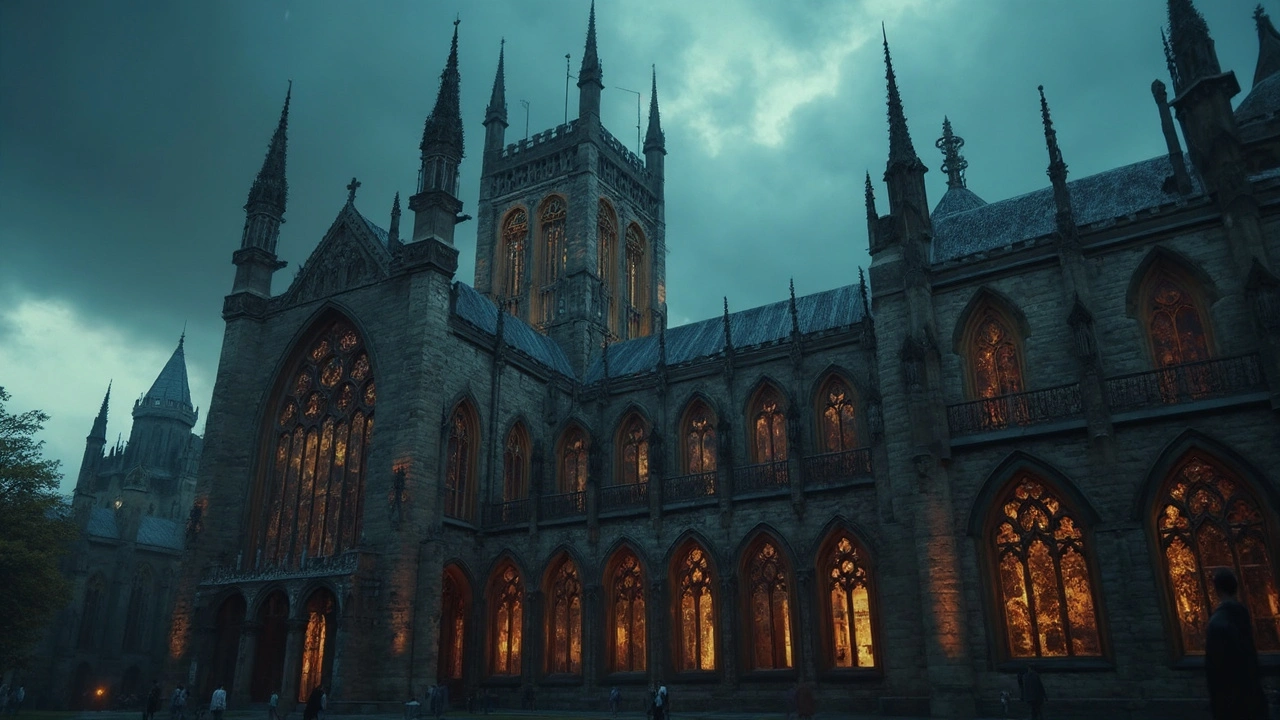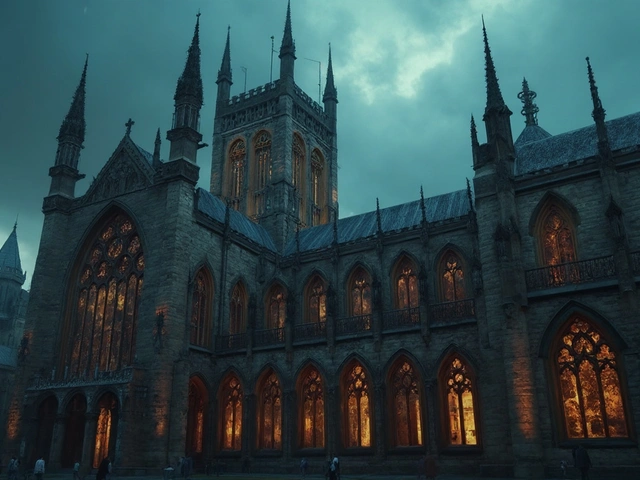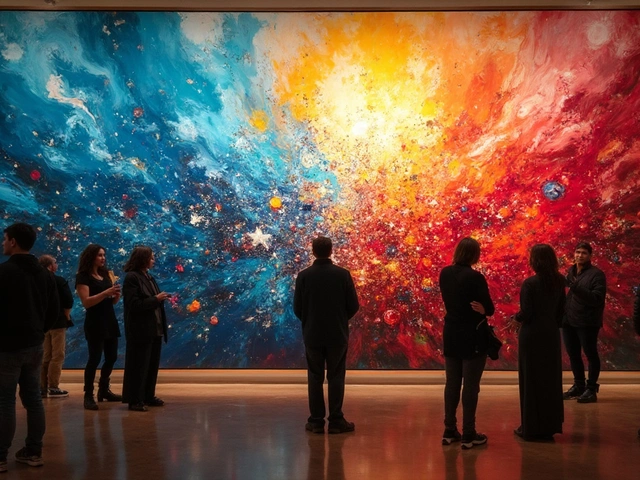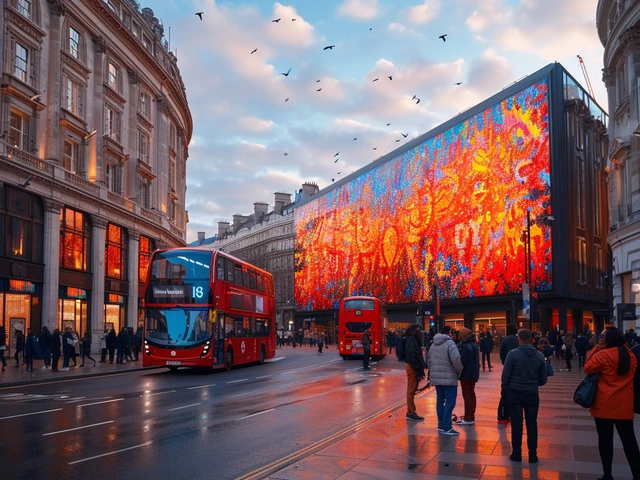If you think gothic art is all about spooky churches and creepy stone faces, there’s so much more going on under the surface. This style exploded in Europe around the 12th century and totally changed how people saw art and buildings. Unlike the heavy, blocky stuff that came before it, gothic art made everything taller, lighter, and honestly, a bit more intense.
One thing you’ll notice right away: emotion is everywhere. You get that gut-punch feeling from the stained glass windows and those dramatic faces carved into stone. The artists didn’t hold back. And it’s not just old stuff—bits of gothic style pop up all over today, from tattoos to fashion to movie sets. If you want to spot gothic touches in real life, keep an eye out for those pointy arches, crazy gargoyles, and windows that throw colors everywhere when the sun hits just right.
- Where Gothic Art Began
- Standout Features That Define Gothic Art
- Raw Emotion in Every Detail
- Modern Impact and Everyday Tips
Where Gothic Art Began
The roots of gothic art are in 12th-century France, but it quickly made waves across Europe. Back then, people were ready for a change from Romanesque art, which was heavy, dark, and not very inviting. The first huge boost for gothic style happened with the building of the Basilica of Saint-Denis, close to Paris, led by Abbot Suger in the 1140s. He wanted more light and color in churches, so he went big with tall windows and thinner walls that let colorful glass shine.
This style didn’t just stick around Paris. Soon, famous places like Notre-Dame (yep, the one with the hunchback) and the giant Chartres Cathedral picked up the look. By the late 1100s, gothic architecture and art were popping up in Germany, England, and Italy. People wanted their churches to feel inspiring—not just intimidating.
Here’s something wild: some of these cathedrals took over 100 years to finish. Entire generations of families worked together on one church. Imagine putting that much effort into a single building today!
Check out when gothic cathedrals took off across Europe:
| Country | First Major Gothic Cathedral | Start Date |
|---|---|---|
| France | Basilica of Saint-Denis | 1144 |
| England | Canterbury Cathedral (rebuilt) | 1174 |
| Germany | Cologne Cathedral | 1248 |
| Italy | Milan Cathedral | 1386 |
What kicked off as a church-building trend ended up transforming painting, sculpture, and even day-to-day objects. Real people started to show up in art, not just religious figures or saints. Faces turned more emotional. It’s like someone finally took the filter off and made things real.
Standout Features That Define Gothic Art
You don’t need a PhD to pick out gothic art—the style is literally everywhere once you know the signs. Look at almost any classic medieval cathedral, and you’ll spot three big things: pointed arches, ribbed vaults, and flying buttresses. These weren’t just design choices, but real upgrades that let builders go higher and add more windows.
One of the most famous examples is Notre-Dame in Paris. Its pointed arches give the whole space a feeling of height and make the place instantly recognizable. Those ribbed vaults? They look like the skeleton of the ceiling and help spread the weight, making it possible to build massive buildings without them caving in.
- Stained glass windows: These weren’t just pretty—they told stories from the Bible and made sunlight burst with color inside. A single window could contain dozens of unique scenes. In some cathedrals, there are over 170 windows, each with its own message.
- Gargoyles and sculpted figures: These stone critters acted as drains and were meant to scare off evil spirits. Some even have facial expressions so wild you’d think they’re reacting to modern life.
- Vertical lines: Everything in gothic art seems to pull your eyes up, pushing for that dramatic, almost otherworldly vibe.
- Details everywhere: Check out the doorways and walls—there’s almost always tons of tiny sculpture work, sometimes showing entire stories or local legends.
Here’s something cool: gothic architecture let buildings have way more windows than anything before. This wasn’t just for looks. More light meant less gloom, both literally and in how people felt. Here’s a quick look at what really set gothic apart from the crumbling Romanesque stuff that came first:
| Romanesque | Gothic | |
|---|---|---|
| Arches | Rounded | Pointed |
| Windows | Small, few | Huge, many |
| Walls | Thick | Thinner |
| Ceilings | Low | Very high |
The next time you walk into an old church—or even a building trying to copy the style—check for these features. The drama, the colors, and those wild carvings all shout "gothic." Once you know these signs, you’ll spot them fast, even if you’re just scrolling photos on your phone.
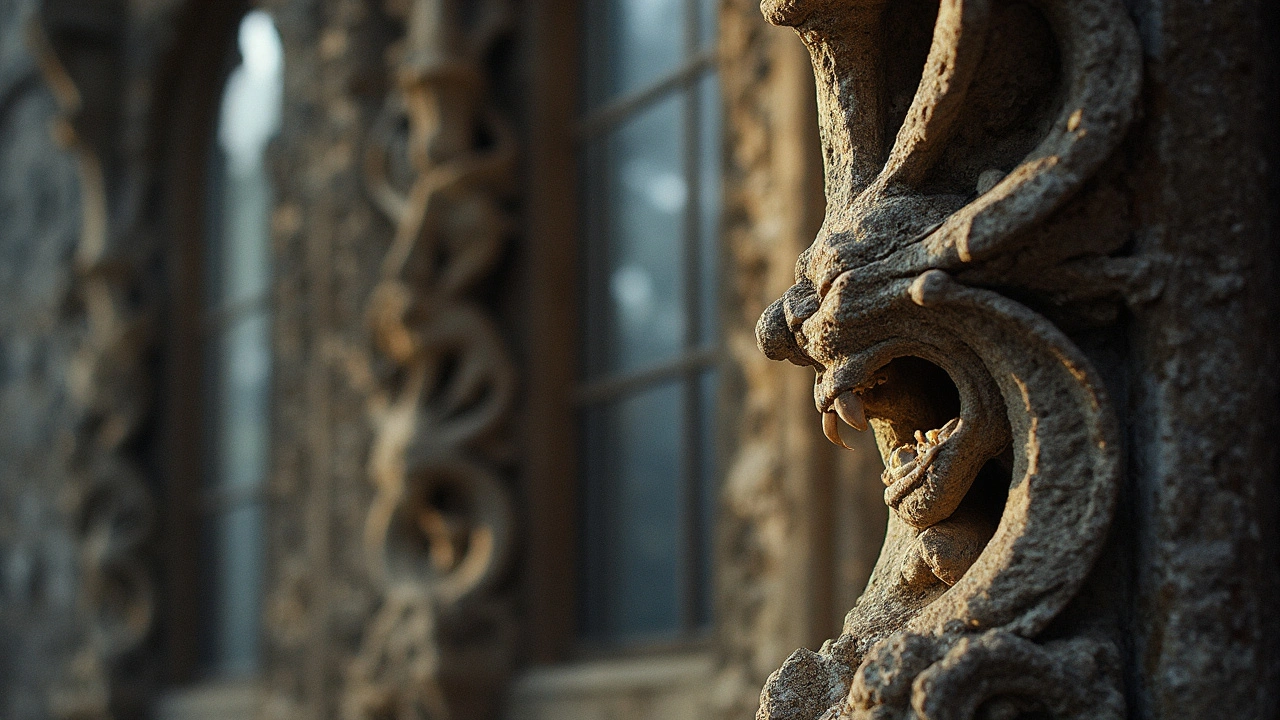
Raw Emotion in Every Detail
What really sets gothic art apart is how it makes you feel. These artists were all about showing real reactions—pain, hope, fear, joy—at a time when most art felt stiff or flat. If you’ve ever looked at a gothic sculpture and thought the face looked actually upset or amazed, that was 100% on purpose. These guys wanted emotion on display, not just pretty poses.
Check out the statues above the doorways of big cathedrals: wrinkled brows, wide eyes, and hands reaching out. In the stained glass windows, you’ll see wild scenes that actually tell a story—sometimes people crying, celebrating, or even monsters lurking in the corners. The goal? Make the viewer feel something right away, no matter who they were or where they came from.
One cool fact: the famous Notre-Dame cathedral in Paris is stacked with 5,000 carved figures, and almost all of them have different emotional expressions. No two faces are the same—they’re designed to make you pay attention and connect. Gothic painters did the same thing. If you see a medieval painting with long, stretched bodies and big gestures, that’s gothic style leaning into drama.
- Stained glass windows: The colors are bold and scenes are emotional. Each panel tells a story or conveys a strong feeling.
- Gargoyles and statues: These weren’t just water spouts. A lot show fear, anger, or sadness and were meant to scare off evil spirits or just get people talking.
- Reliefs on doors: Crowds of saints, monsters, and everyday people—all showing feelings in their faces and poses. You can spot joy, suffering, and even humor.
A study by the Metropolitan Museum showed that gothic art’s main goal was visual storytelling. Even people who couldn’t read could walk through a church and get the drama—just by looking at the pictures.
| Feature | How Emotion Shows |
|---|---|
| Sculptures | Detailed faces, dramatic poses |
| Stained Glass | Bold colors, intense scenes, storytelling |
| Paintings | Stretched bodies, oversized gestures, big eyes |
If you’re into emotional art and want to get inspired for your own work, gothic art is a goldmine. Try sketching a few faces from gothic statues or windows and see how much emotion you can pack in with just a few lines or colors.
Modern Impact and Everyday Tips
You might be surprised by how much gothic art shows up in daily life. Just look at major cities—big buildings like the Cathedral of Saint John the Divine in New York are clear throwbacks to medieval gothic architecture. Even music videos, video games, and movies use gothic features to get a moody or dramatic vibe. Tim Burton's movies, for example, lean heavily on gothic shapes and colors because they instantly set an emotional tone.
If you want to bring some gothic art energy into your world, you don’t need a fancy church or ancient stone. There are easy ways to work those bold looks into your home, your wardrobe, or your Instagram feed:
- Pick up home accessories like candle sconces or mirrors with pointed arches—instant gothic flavor without going overboard.
- Look for clothes with lace, rich velvets, or detailed embroidery—these come straight from medieval gothic art styles.
- Try photography tricks—shoot in dramatic shadows or use colored light filters to mimic stained glass effects.
- Draw or doodle gargoyles, spires, or even bold calligraphy fonts. You don’t have to be an expert; just add sharp lines and dramatic contrasts.
For artists or creators working digitally, explore free font resources or stock images tagged "gothic" to give any project a raw, emotional edge. The hashtag #GothicArt gets millions of views on social media every year, proving people still get hooked by these classic designs.
| Platform | #GothicArt Posts (2024) |
|---|---|
| 2.3 million | |
| 950,000 | |
| Tumblr | 670,000 |
Just remember: gothic art is about channeling strong feelings, so don’t hold back if you want to try it out. Whether you’re decorating, doodling, or just snapping photos of cool old buildings with wild details, that mix of history and emotion never really goes out of style.

